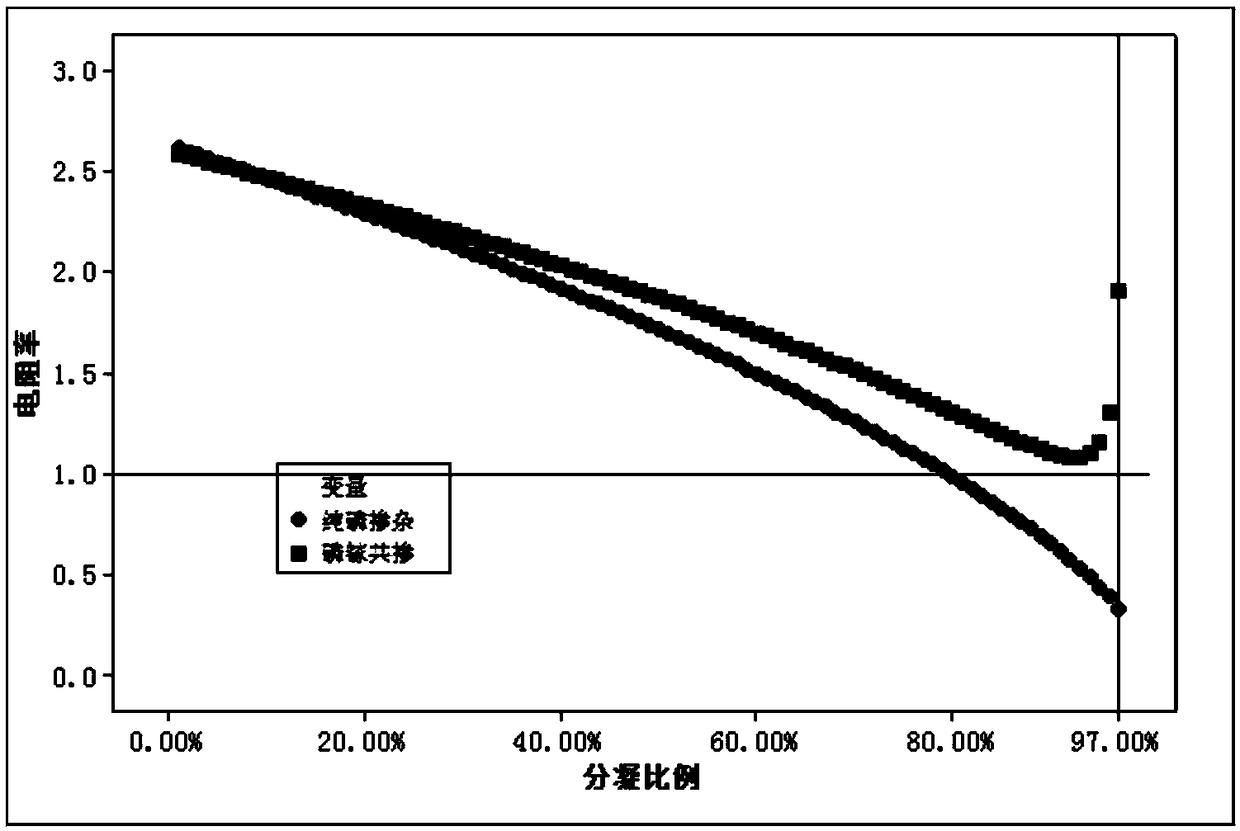A process for preparing solar-grade N-type monocrystalline
A solar-grade, single-crystal silicon technology, applied in the field of preparation of solar-grade N-type single-crystal silicon, preparation of single-crystal silicon, and resistance control of N-type single-crystal silicon, which can solve the problem of disturbing the melt, unfavorable resistivity control, weakening Phosphorus-based N-type resistivity and other issues to achieve the effect of increasing concentration
- Summary
- Abstract
- Description
- Claims
- Application Information
AI Technical Summary
Problems solved by technology
Method used
Image
Examples
Embodiment 1
[0033] A method for preparing solar-grade N-type single crystal silicon provided in this embodiment specifically includes the following steps:
[0034] Step (1): Add the silicon raw material into the 28-inch quartz crucible placed in the main heating chamber of the single crystal furnace, and at the same time, put 30# phosphorus-based N-type master alloy and gallium in the middle part of the silicon raw material;
[0035] Step (2): Close the single crystal furnace, evacuate to below 40mtorr, conduct leak detection, heat and melt for 4.5H, then use the re-injector to re-inject silicon raw materials, and continue to heat and melt, specifically:
[0036] Vacuumize to below 40mtorr, automatic leak detection, leakage rate is lower than 40mtorr / h, the leak detection is considered qualified, start the pressure and fill the argon and vacuum valve, control the pressure in the furnace at 1600-2600pa, heat and melt, after melting for 4.5H , re-throw to the target weight, and continue to ...
Embodiment 2
[0045] A specific embodiment of a method for preparing solar-grade N-type single crystal silicon provided in this embodiment specifically includes the following steps:
[0046] Step (1): Add 250KG of solar super grade or electronic grade silicon raw material into a 28-inch quartz crucible placed in the main heating chamber of the single crystal furnace, and at the same time, put 30# phosphorus-based N-type master alloy 114 in the middle of the silicon raw material grams and gallium 1.5 grams;
[0047] Step (2): Close the single crystal furnace, evacuate to below 40mtorr, conduct leak detection, heat and melt for 4.5H, then re-inject 120KG of silicon raw material with a re-injector, and continue to heat and melt, specifically:
[0048] Vacuumize to below 40mtorr, automatic leak detection, leak detection is considered qualified if the leak rate is lower than 40mtorr / h, start pressure and fill with argon and vacuum valve, control the pressure in the furnace at 1600-2600pa, heat a...
PUM
| Property | Measurement | Unit |
|---|---|---|
| length | aaaaa | aaaaa |
Abstract
Description
Claims
Application Information
 Login to View More
Login to View More - R&D
- Intellectual Property
- Life Sciences
- Materials
- Tech Scout
- Unparalleled Data Quality
- Higher Quality Content
- 60% Fewer Hallucinations
Browse by: Latest US Patents, China's latest patents, Technical Efficacy Thesaurus, Application Domain, Technology Topic, Popular Technical Reports.
© 2025 PatSnap. All rights reserved.Legal|Privacy policy|Modern Slavery Act Transparency Statement|Sitemap|About US| Contact US: help@patsnap.com

